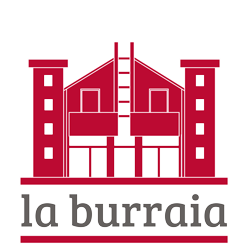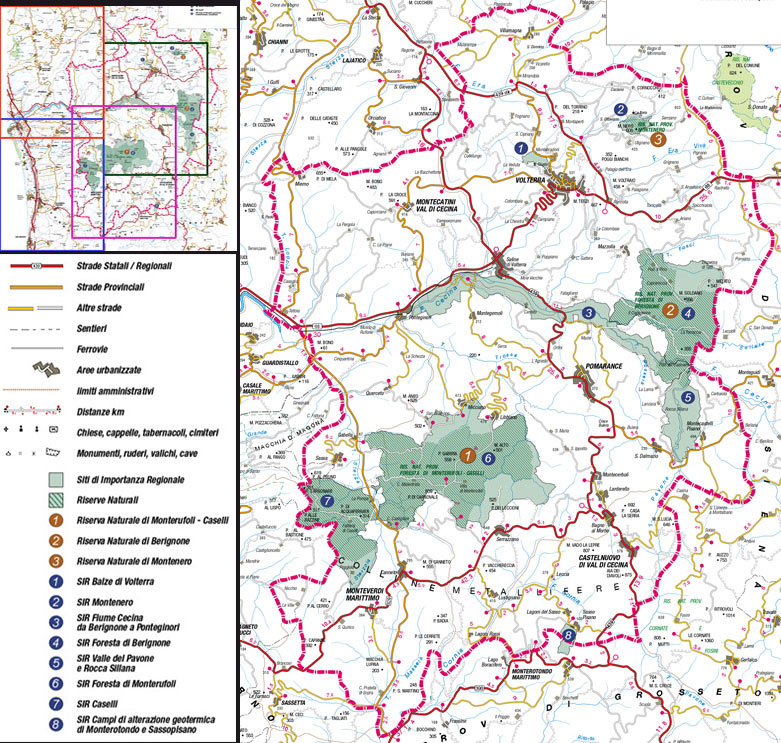


Surroundings
THE "VAL DI CECINA"
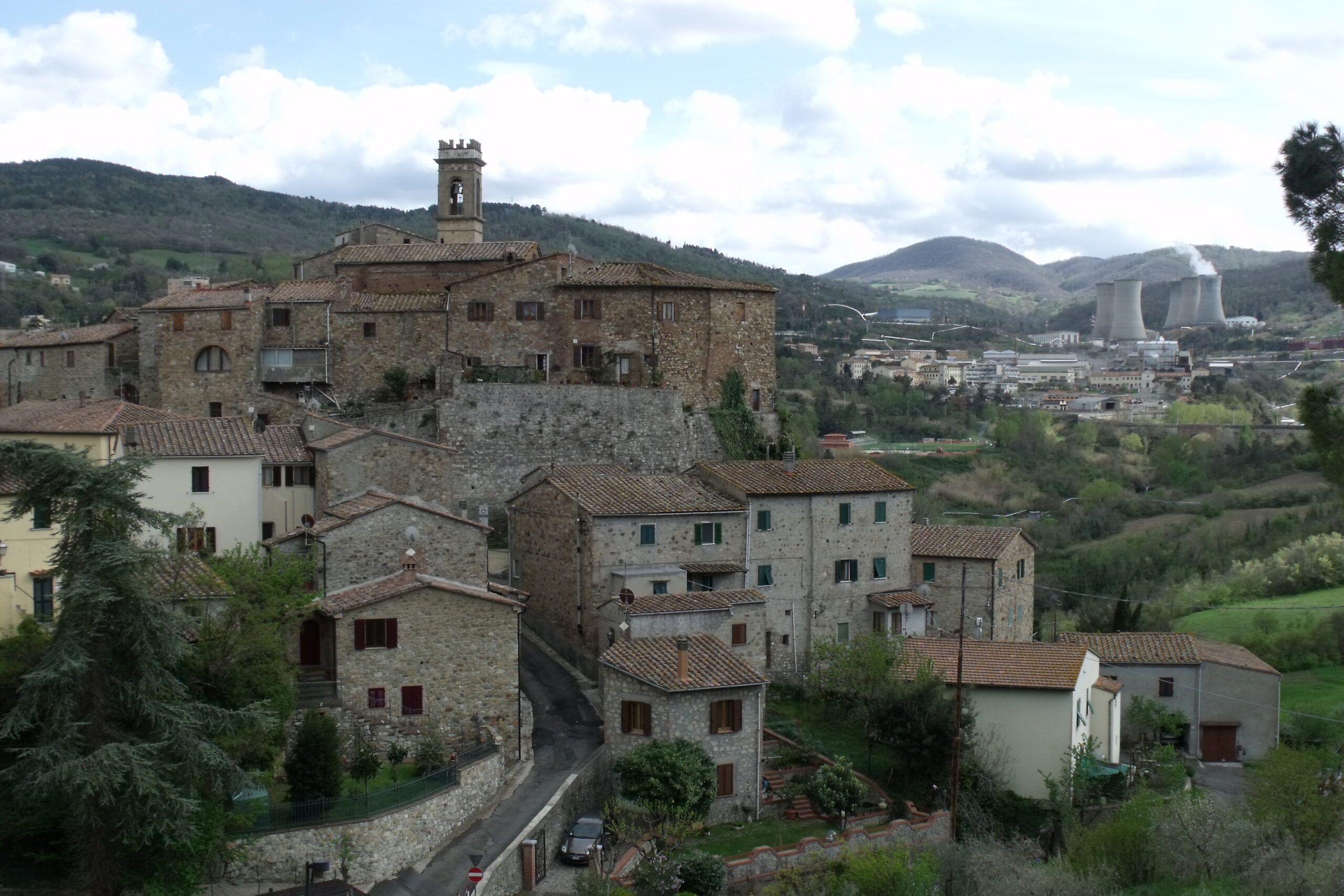
The Medieval Village
Pomarance
Pomarance is located in the center of a territory of great historical-artistic interest, in the Upper Maremma region of Tuscany called “Le Colline metallifere.”
Although it is not included in the most popular tourist itineraries, it is rich in archaeological, landscape and artistic treasures.
Its historic core still retains its ancient morphology with castle walls, gates, medieval and Renaissance palaces and the ancient Romanesque church of St. John the Baptist.
It was in the 19th se colo that Pomarance gave birth to a very refined culture and architectural taste, proven by the beautiful palaces of Via Roncalli and the presence of two perfectly preserved and functioning theaters.
Among the hamlets included in the municipality, that of San Dalmazio preserves in its territory two important ruins: the parish church of San Giovanni and the Rocca Sillana (10th century).
It is near the ancient hamlet that “the boraciferous soffions” power some 20 geothermal power plants for billions of KW annually, showing us a bizarre and highly original landscape.
To nature lovers, the territory of the municipality of Pomarance offers numerous scenic attractions with its rivers and immense forests, a fascinating destination also for those interested in geology and mineralogy.
For those who love outdoor sports: tennis, horseback riding, archery and in Larderello the geothermal pool.
Pomarance is also home to the Palio that takes place every year on the second Sunday in September, with theatrical performances and the historic costume parade.
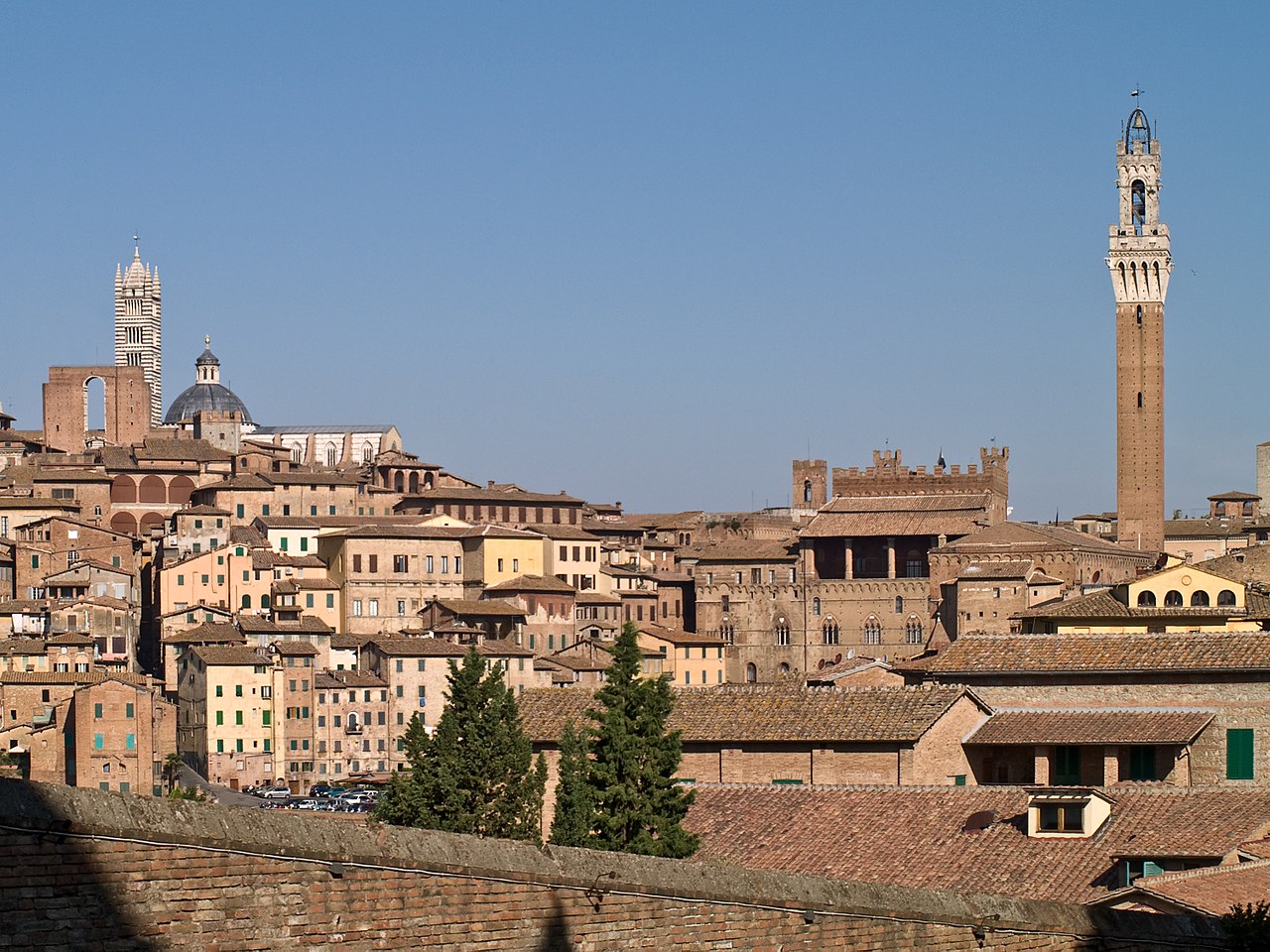
World Heritage Site
Siena
Siena can be seen from afar shining perfect in its medieval balance. The three hills on which it sits stand out in an idyllic country landscape, in which the boundaries of the ancient center blur as they once did into a countryside that at times still looks like that portrayed in the Allegoria del Buon Governo painted by Ambrogio Lorenzetti in the rooms of the Palazzo Pubblico.
Siena, untouched for centuries, shows itself today for the most part as it appeared in the 1300s, and the preservation of a unique and coherent medieval architectural heritage is one of the main reasons for visiting a splendid city that has long been aware of the fragility of its equilibrium: indeed, it was the first municipality in Europe to close its historic center to traffic, back in 1966.
But it would be wrong to think of Siena as a city stuck in its past, a postcard tourist destination where life has crystallized. On the contrary, strolling through its alleyways reveals a living city, a true cultural center that is home to a 750-year-old university, as well as institutions of international prestige such as the Accademia Musicale Chigiana, the University for Foreigners, and the Fisiocritici and Intronati academies.
The city’s heyday, coinciding with Siena’s emergence as a rival to Florence, was reached at the height of the Middle Ages, a period that saw the city-at the height of its historical and economic evolution-take its present form: over the course of a few decades, the splendid Palazzo Comunale with the towering Torre del Mangia were erected, the beautiful Piazza del Campo was paved with travertine ribs to design its characteristic shell shape, and the world-famous Duomo was erected, which the Sienese even intended to enlarge – a project that was definitively shelved (but traces of which are clearly visible in Piazza Jacopo della Quercia, where the columns of what were to be the new naves and the “facade” are recognizable) because of the black plague epidemic that ravaged the city in 1348.
The Etruscan City
Volterra
The town, famous for the mining and working of alabaster, was one of the main city-states of ancient Tuscany (Etruria), was the seat in the Middle Ages of an important episcopal lordship having jurisdiction over a large part of the Tuscan Hills.
Today it retains a remarkable historic center of Etruscan origin (the beautifully preserved Porta all’Arco remains from this period; the Porta Diana, which retains the jamb blocks; much of the city walls, built with cyclopean blocks of local stone; the Acropolis, where there are the foundations of two temples, various buildings and some cisterns; numerous hypogea used for the burial of the dead), with Roman ruins (among all the Hemicycle Theater) and medieval buildings such as the Cathedral, the Medici Fortress and the Palazzo dei Priori on the square of the same name, the nerve center of the town.
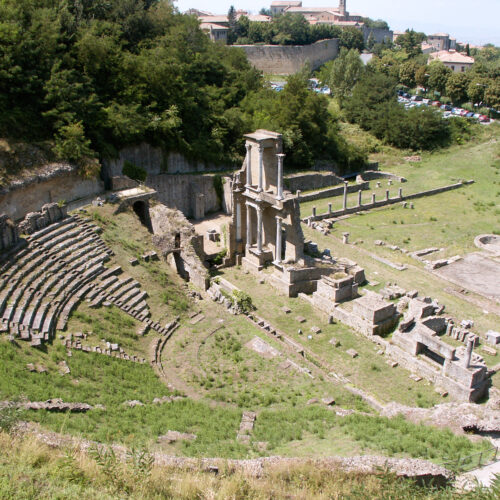
Exploring the "Val di Cecina"
The Val di Cecina extends along the course of the Cecina River in the southern part of the province of Pisa until it laps some territories in the provinces of Siena and Grosseto, and it enters for a short distance into the central portion of the province of Livorno near the mouth and terminal stretch of the watercourse.
The territory is predominantly hilly throughout the hinterland and flat only near the mouth. From a landscape point of view, the steep gullies, known by the name of Balze di Volterra, which are found near the town of the same name, are very suggestive; the area is rich in both geothermal sources, which are manifested in the form of boraciferous soffions in the area around the locality of Larderello, and two wind power plants for energy production, located in the municipalities of Riparbella and Montecatini Val di Cecina on the border with Valdera.
The Val di Cecina area covers the municipalities of Castellina Marittima, Riparbella, Casale Marittimo, Guardistallo, Montescudaio, Montecatini Val di Cecina, Volterra, Pomarance, Castelnuovo di Val di Cecina and Monteverdi Marittimo in the Pisan hinterland, portions of the municipalities of Radicondoli and Casole d’Elsa in the province of Siena,the municipality of Cecina along the Livorno coast the municipality of Bibbona and the hamlet of Vada in the municipality of Rosignano Marittimo. Adding up the population of its component municipalities, the Cecina Valley has about 72,000 inhabitants.
The area of the Val di Cecina that extends along the first foothills sloping down to the Maremma Livornese and the central part of the Etruscan Coast is also called Maremma Pisana and involves the municipalities of Castellina Marittima, Riparbella, Montescudaio, Guardistallo, Casale Marittimo and Monteverdi Marittimo.
Map by ambientavaldicecina.it
Costa degli Etruschi (The Etruscan Coast)
The Etruscan Coast includes the stretch of coastline from Livorno to Piombino, the beauty of these places is confirmed by the Blue Flags obtained by its beaches last year (2017): Castiglioncello and Vada (Rosignano Marittimo), the Gorette (Cecina), and the Marina di Castagneto Carducci beach, just to name a few. Here history and literature intertwine; in Castagneto Carducci it is possible to visit the birthplace of the poet Joshua, in whose museum and archives are preserved autograph writings, photographs and various memorabilia.
Along the Etruscan Coast area there is also the Bolgheri Wildlife Oasis, the first established in Italy by the WWF, an important refuge for numerous animal species.
The history of this area is intertwined with the evolution of the Etruscan people until the Roman invasion. Today traces of this remain in the various Etruscan necropolis between the Gulf of Baratti and Populonia, the only large Etruscan center that arose along the coastal strip, in which it is still possible to admire the ancient Etruscan walls and remains of Roman buildings.
